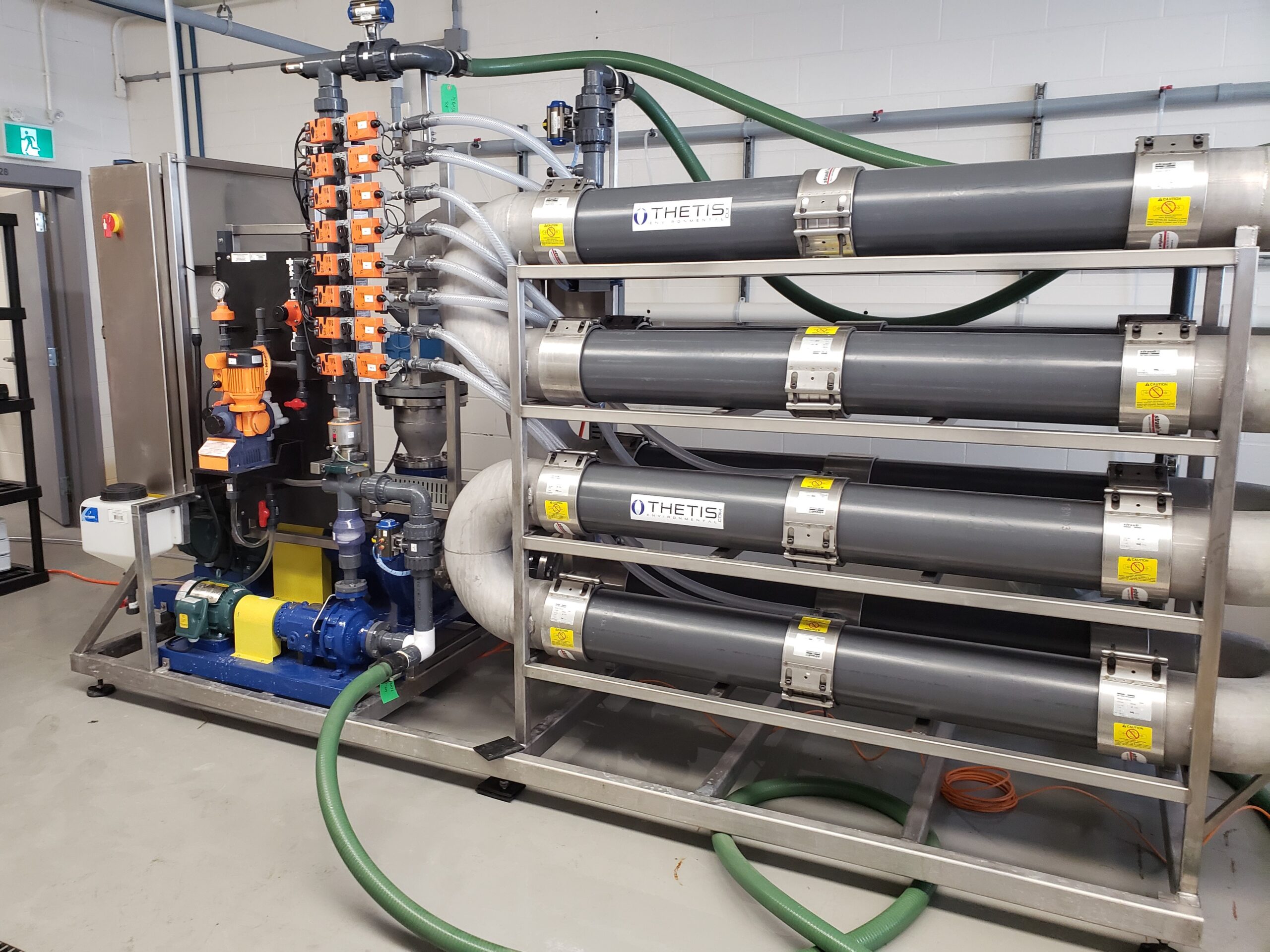With support from the Ontario Water Consortium’s Water Industry Growth Program, Thetis Environmental is leveling up their membrane solutions for industrial wastewater treatment.
Just about every industry produces wastewater. But what’s in that effluent — and how concentrated the pollutants are — varies wildly between sectors. For Hamilton-based Thetis Environmental, that creates the opportunity to carve out a successful specialty treating high-strength wastewater.
Since launching in 2014, the small but growing company manufactures ultrafiltration membranes designed to efficiently remove high concentrations of suspended particulates and concentrate the waste more than any other membrane on the market. This revolutionary technology is called PermaFluxTM.
“It’s a very small niche market in the water business,” explains Thetis CEO John Tomescu. “But it’s big enough to be interesting.”
Putting the pieces together
However, as an industry veteran — whose decades-long CV includes senior positions at startup companies and global giants like General Electric — Tomescu knows they need to continue pushing the envelope.
Patents only offer so much protection in a competitive industry, he says. “What keeps people ahead of the game is innovation.”.
Take the example of energy efficiency. Thetis recently developed an ultrafiltration membrane that uses three to four times less energy than competing systems.
Now, Tomescu is eyeing the issue of dissolved solids. Many of his customers currently remove these pollutants by adding a nanofiltration unit or reverse osmosis system after a PermaFluxTM system.
That got Tomescu wondering. Would it be feasible to combine the two steps? A single unit could offer several benefits.
First of all, it could create significant cost and energy savings. Instead of separate membrane systems for dissolved and suspended solids, each requiring its own set of pumps, a combined module could be driven by a single set of pumps.
The combined module could also remove more pollutants, creating cleaner effluent. As a result, it would cut operating costs by reducing — or even eliminating — the need for a final chemical polishing stage to meet discharge standards. Not only that, but it would also allow more wastewater to be reused in operations.
Meanwhile, a combined module would address another common issue: the buildup of scale on membranes caused by dissolved calcium ions. Incorporating nanofiltration or reverse osmosis into the process would remove that calcium before it could create problems.
A combination for success
Thetis set out to create a combined unit with help from Ontario Water Consortium’s Water Industry Growth (WIG) program. WIG provides grants up to $100,000 — which applicants must match — to help companies in Southern Ontario advance the development and adoption of water technologies. “I think it’s a great program,” says Tomescu. “It’s a great opportunity.”
Today, the support is helping Thetis develop and validate their combination UF/NF system. The company will build and test it in-house before deploying a pilot system to compare different membrane options.
Thetis already has an initial design for their upgraded technology, along with multiple companies keen to test a demonstration model. They also have backup plans ready to go in case they run into challenges. As Tomescu explains, when you’re attempting something that hasn’t been done before, you have to be prepared for a curveball or two. “Failure is what teaches us,” he says. “You fail and you start again.”
He sees programs like WIG as an ideal fit for this kind of high-risk/high-reward research. Unlike private venture capital, WIG funding allows companies to maintain full control of their business and to grow at their own pace, without the pressure to cut corners to meet aggressive ROIs.
Delivering big benefits for industry
Once they have a working module, Tomescu predicts that customers will line up eagerly. He points to the metal processing industry and mining industry as prime markets. Current methods for treating their waste use a lot of chemicals, which means high input costs. Meanwhile, if those methods don’t sufficiently lower the concentration of key pollutants, companies are forced to pay a municipal surcharge.
Thetis’s combined system offers an attractive alternative: effectively removing suspended and dissolved solids, using up to four times less energy and recovering up to 80 per cent of the wastewater for reuse.
Thanks to WIG, Thetis expects to have a working prototype ready by the end of 2023. In doing so, they will continue carving out a niche in a competitive industry, advancing the state of the art and bringing made-in-Canada technology to the world.
“You’ve got be a step ahead,” says Tomescu. “You’ve got to continue to innovate.”
WIG supports industry innovations that accelerate growth, create jobs and strengthen Ontario’s water sector. For more information, click here.
OWC’s Innovation Showcase aims to highlight cutting-edge advancements and breakthrough technologies of Southern Ontario companies that address the pressing challenges and opportunities in the water sector – View Thetis’ Showcase


